Last updated: January 30, 2024
Did you know that a horse’s ears are a window into their thoughts and feelings? As a seasoned horse owner and enthusiast, I’ve learned to decipher this silent language of ear movements, a skill as intricate as understanding a spoken language. This article delves into the art of interpreting equine ear positions, a key aspect often overlooked yet crucial for anyone interacting with horses.
Understanding these subtle cues is vital for horse owners, riders, and enthusiasts. It enhances safety, strengthens the bond between horse and human, and enriches our overall experience. Join me in exploring this unique aspect of horse behavior, where every flick and turn of the ear opens up a world of understanding.
Forward Ears: Curiosity and Attention
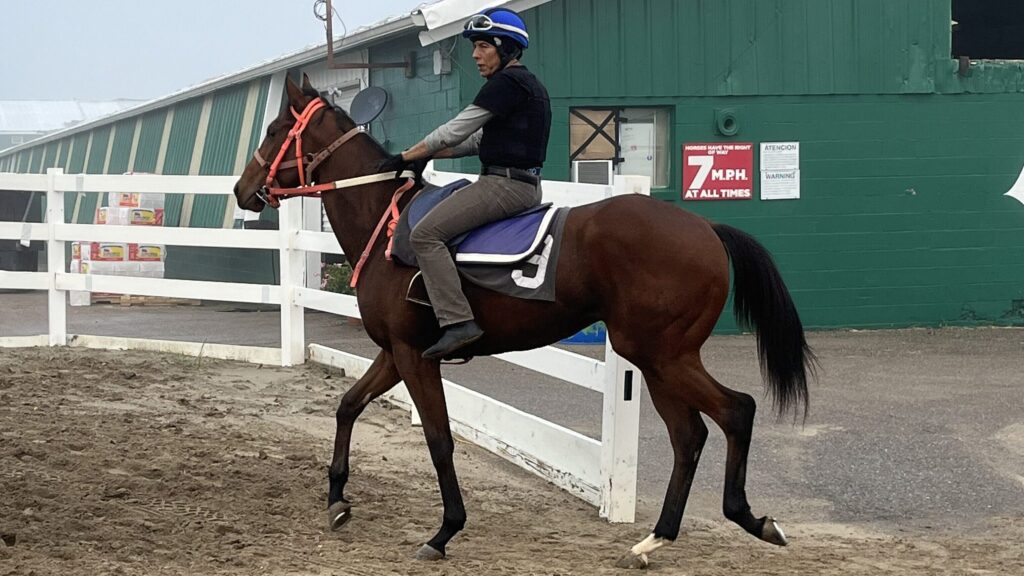
When a horse’s ears are pricked forward, it’s a clear sign of their engagement with the environment. This ear position is akin to a person leaning in closer to hear a fascinating story.
What Does It Mean?
- Curiosity: Just like us, horses are curious creatures. Forward ears often mean they’re intrigued by something ahead, possibly a new object, animal, or person.
- Focus: In training or work scenarios, this position can show that the horse is focused on the task or direction given by the handler.
- Interest: It’s a positive sign in social interactions, suggesting the horse is open and receptive to engagement.
Why It Matters
- Safety: For riders and handlers, recognizing this signal helps in understanding what the horse is paying attention to, which is crucial for safety.
- Bonding: Acknowledging and responding to these cues can strengthen the bond between you and the horse, as it shows mutual understanding and respect.
Ear Pinned Back: Discomfort or Aggression
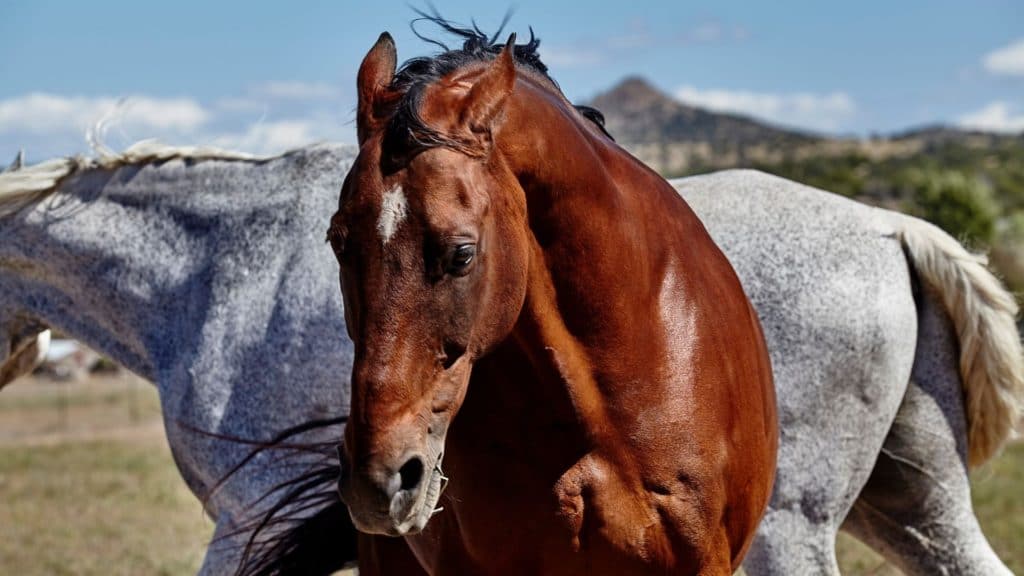
When a horse pins its ears back close to the head, it’s a significant signal that shouldn’t be ignored. This ear position is often a manifestation of discomfort, annoyance, or even aggression. Understanding and reacting appropriately to this cue is crucial for anyone interacting with horses.
Understanding the Signal
- Discomfort: Ears laid flat may indicate the horse is uncomfortable. This could be due to a physical issue like an ill-fitting saddle or a behavioral concern.
- Annoyance or Aggression: If accompanied by other signs like showing teeth or swishing tail, it’s a clear warning that the horse may be feeling threatened or irritated.
Safety Implications
- Be Cautious: Recognize this as a potential warning sign. Give the horse space and try to identify any causes of distress.
- Avoid Sudden Movements: Move calmly and predictably to avoid escalating the situation.
- Seek Expert Help: If the behavior is consistent, consult a veterinarian or an equine behaviorist to rule out any underlying issues.
Proactive Actions
- Observe Context: Look for other body language cues to understand the situation better.
- Stay Calm: Maintain a calm demeanor. Horses can pick up on and react to human emotions.
- Address Potential Causes: If it’s a recurring behavior, investigate and address any potential causes like pain, fear, or environmental stressors.
One Ear Forward, One Backward: Multitasking
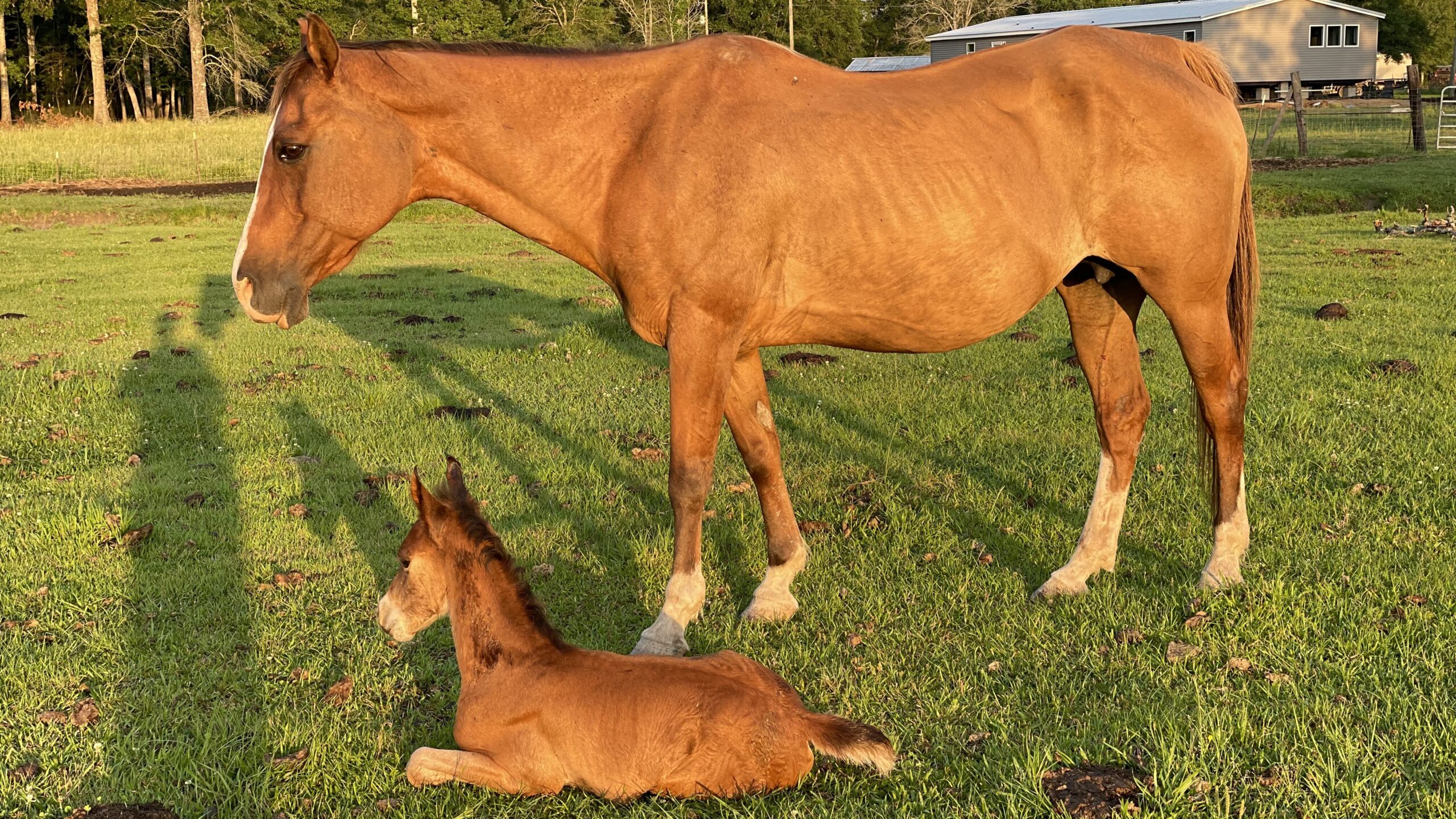
A horse displaying one ear forward and the other backward is engaging in an equine form of multitasking. This unique ear position is a fascinating display of the horse’s ability to pay attention to multiple stimuli simultaneously.
Interpreting the Position
- Dual Focus: The horse is likely monitoring something in front of it (indicated by the forward ear) while also keeping tabs on something happening behind or beside it (suggested by the backward ear).
- Balanced Awareness: This position often occurs in environments where the horse feels the need to stay alert to various activities around it.
Significance in Horse Behavior
- Versatile Attention: It showcases the horse’s versatile sensory capabilities, allowing them to process different sources of information at once.
- Adaptability: Horses are naturally adept at adapting to their surroundings, and this ear position is a testament to their ability to stay connected to their environment.
Observational Insights
- Environment Assessment: Notice the surroundings to understand what might be catching the horse’s attention in different directions.
- Behavioral Cue: This position can be a regular occurrence in curious and alert horses, indicating their keen interest in their environment.
Swiveling Ears: High Alertness
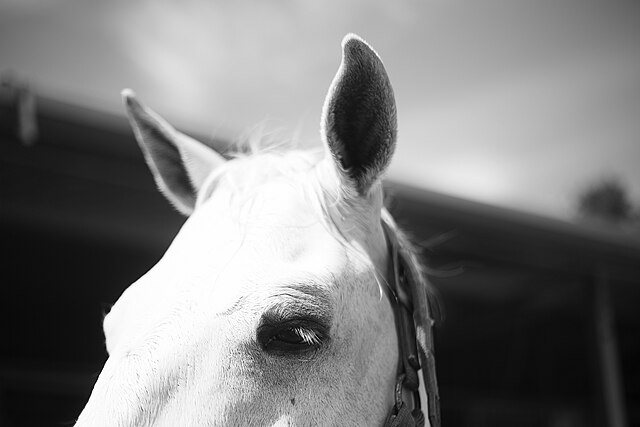
Horses with swiveling ears are like living radar systems, constantly scanning their environment. This active movement of the ears is a clear indicator of a horse’s heightened alertness and attentiveness.
The Significance of Swiveling
- Environmental Scan: Swiveling ears suggest that the horse is actively listening to and assessing various sounds and movements around it.
- Continuous Awareness: Unlike humans, horses can rotate their ears to focus on different sounds without moving their heads, allowing them to be acutely aware of their surroundings.
Link to Attentiveness
- Sensory Acuity: This ear movement is a testament to the horse’s remarkable sensory capabilities, particularly their hearing.
- Safety and Communication: For handlers and riders, recognizing this behavior is crucial for understanding what the horse is focusing on, which can be vital for safety and effective communication.
Observing Swiveling Ears
- Indication of Mood: Rapid ear movement can indicate excitement or nervousness, while slower, deliberate movements might suggest curiosity.
- Context Matters: Always consider the overall context – other body language, the environment – to accurately interpret what the horse might be sensing or feeling.
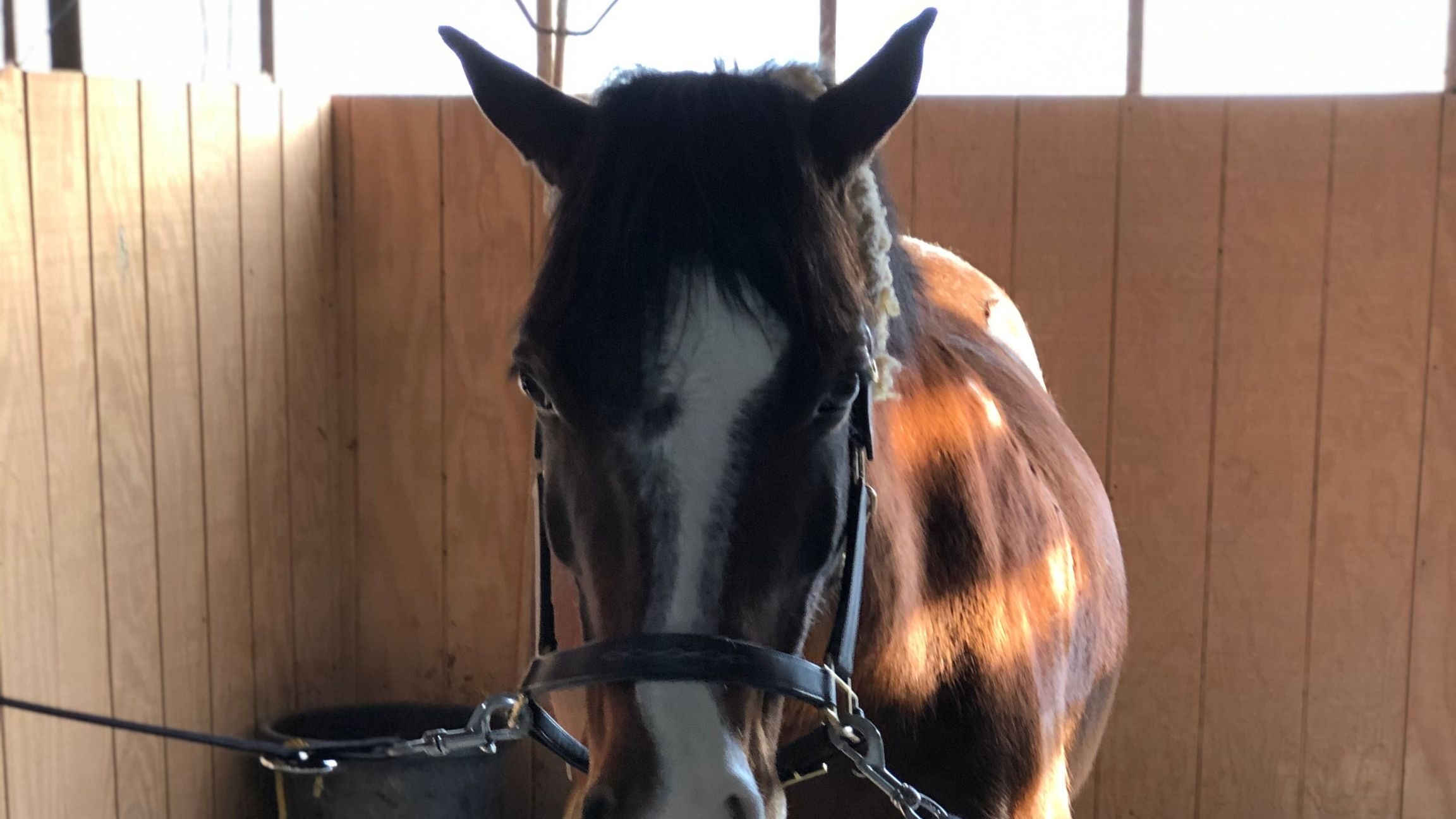
Drooping Ears: Relaxation or Fatigue
Drooping or loosely hanging ears in horses often signify a state of relaxation or fatigue. It’s important to correctly interpret this ear position to distinguish between a contented horse and one that may be experiencing health issues.
Significance of Drooping Ears
- Relaxation: In a calm and comfortable environment, a horse with drooping ears is typically relaxed. This is often seen when they are at ease with their surroundings.
- Fatigue: After extensive exercise or during hot weather, drooping ears can indicate tiredness or exhaustion.
Identifying the Context
- Relaxed vs. Unwell: While relaxation is a common reason for drooping ears, if accompanied by other symptoms like lethargy, lack of appetite, or unusual behavior, it could signal a health concern.
- Body Language: Observe the horse’s overall body language and demeanor. A relaxed horse will generally have a calm posture and soft eyes, whereas a horse not feeling well might show signs of distress or discomfort.
When to Be Concerned
- Persistent Drooping: If the ears are consistently drooping without moments of alertness, or if there are changes in behavior or physical condition, it’s advisable to consult a veterinarian.
- Environmental Factors: Consider factors like recent activity levels, weather conditions, and changes in routine that might affect the horse’s energy and ear position.
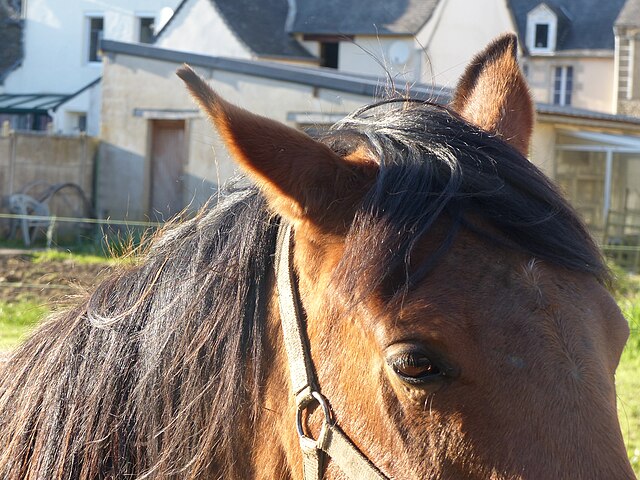
Contextual Understanding of Ear Positions
Interpreting a horse’s ear positions requires more than just recognizing the ear movement itself. It’s crucial to consider the horse’s overall body language and the environment, as these factors can significantly influence the meaning behind the ear positions.
The Role of Context
- Comprehensive Assessment: Ear positions should be viewed as part of a larger body language context, including the horse’s posture, eye expression, tail movement, and vocalizations.
- Environmental Influence: The surroundings, such as the presence of other animals, loud noises, or unfamiliar settings, can impact a horse’s ear positions and overall behavior.
Examples of Contextual Interpretations
- Forward Ears in Different Settings: Ears pricked forward during a trail ride might indicate curiosity about something ahead, while the same position in a tense competition setting could signal focus and readiness.
- Backward Ears and Body Language: Ears pinned back in conjunction with bared teeth and a swishing tail usually indicate aggression, but if the horse is eating or focused on a task, it might simply be concentration.
- Swiveling Ears in Various Scenarios: Rapid ear swiveling in a busy barn could be a sign of alertness to multiple stimuli, whereas the same movement in a quiet setting might suggest nervousness or unease.
Importance of Holistic Observation
- Avoid Jumping to Conclusions: Always take the time to observe the horse’s entire demeanor and the context before interpreting ear positions.
- Safety and Understanding: A holistic approach to reading body language, including ear positions, enhances safety for handlers and deepens the understanding of equine behavior.
General Tips for Approaching Horses
- Read the Whole Horse: Always consider the horse’s overall body language, not just the ear position.
- Speak Softly: Use a gentle, reassuring voice when approaching.
- Let the Horse Come to You: Whenever possible, allow the horse to approach you first, extending its nose for a sniff.
- Respect the Horse’s Space: Understand and respect the horse’s personal space, gradually decreasing the distance as the horse becomes more comfortable.
By tailoring your approach to the horse’s ear position and overall demeanor, you can ensure a positive and safe interaction for both you and the horse.

Practical Tips for Interpreting Ear Movements
Understanding a horse’s ear movements is a valuable skill for handlers, enhancing both the safety and effectiveness of interactions. Here are some actionable tips to interpret these cues accurately and use this understanding to improve handling and training.
Tips for Different Ear Positions
- Forward Ears: When a horse’s ears are pricked forward, engage their curiosity. Introduce new objects or tasks gradually, using this interest to guide learning and exploration.
- Backward Ears: If the ears are pinned back, it’s time to assess the situation. Ensure the horse isn’t in discomfort or feeling threatened. Give them space and approach calmly to avoid potential conflict.
- One Ear Forward, One Backward: This position indicates divided attention. Gently redirect the horse’s focus to the task at hand, ensuring you have their attention before proceeding.
- Swiveling Ears: Use this alertness to your advantage in training. Introduce commands or cues when the horse is most attentive, reinforcing their focus and responsiveness.
- Drooping Ears: Recognize signs of relaxation or fatigue. In training, this could be the right time for a break or to end the session on a positive note.
Enhancing Handling and Training
- Consistent Observation: Regularly observe and interpret ear movements to better understand individual horses’ needs and moods.
- Responsive Actions: Tailor your handling and training approach based on the horse’s ear positions and overall body language. This responsiveness fosters trust and cooperation.
- Safety First: Always prioritize safety by using ear positions as an early indicator of a horse’s comfort level or potential behavioral changes.
- Positive Reinforcement: Reinforce desirable behaviors when the horse’s ears show curiosity or focus, using treats or praise to encourage these states.
Below is a helpful YouTube video about what a horse’s ears can tell us.
Building a Deeper Connection
- Empathy and Understanding: By paying attention to ear movements, handlers can develop deeper empathy and understanding of their horses, leading to a stronger bond.
- Effective Communication: This understanding enhances communication, making training sessions more effective and enjoyable for both the horse and the handler.
Expert Opinion
Dr. Carey A. Williams’ article on ‘The Basics of Equine Behavior’ at Rutgers University offers a comprehensive understanding of equine sensory perception and behavior. It highlights the importance of recognizing horses’ natural instincts and communication methods, which are crucial for anyone involved in equine care and training.”
Citation: Williams, C. A. (2004). The Basics of Equine Behavior. Rutgers University, Equine Science Center. Retrieved from https://esc.rutgers.edu/fact_sheet/the-basics-of-equine-behavior/.
Personal Experience
- Relaxation Indicator: In my own experience, I’ve observed my horse, Duke, with drooping ears while grazing peacefully after a good workout. This was a clear sign of his relaxation and contentment.
- Aggression Warning: Another time, I noticed my horse, TeeTee, pictured above, with ears pinned back and tense posture during feeding. This alerted me to potential aggression, prompting me to intervene and prevent a conflict.
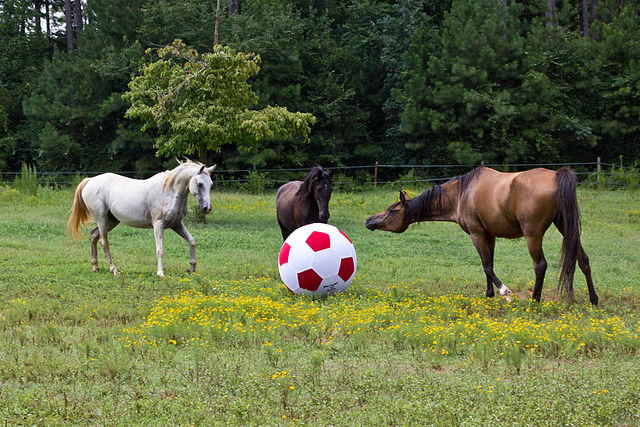
FAQs: What Does a Horse’s Ears Tell You?
How Good Can a Horse Hear?
Horses have excellent hearing, superior to humans. Their hearing range is between 55 Hz and 33.5 kHz, allowing them to detect both low-frequency rumbles and high-frequency sounds. Their ears, containing 16 muscles, can rotate 180 degrees for pinpoint accuracy in locating sounds, enhancing their overall auditory perception.
Can Horses Lose Their Hearing?
Yes, horses can lose their hearing. This could be due to old age, trauma, infection, or certain genetic conditions. A sudden change in behavior or responsiveness could indicate hearing loss. If you suspect your horse has hearing issues, it’s recommended to consult with a veterinarian for an accurate diagnosis and appropriate treatment.
What do forward-pointing ears indicate in a horse?
Forward-pointing ears typically signify curiosity, interest, or focus. It means the horse is paying attention to something in its immediate environment.
Can ear movements indicate a horse’s mood?
Yes, ear movements can be a strong indicator of a horse’s mood. For example, ears pinned back often suggest discomfort or aggression, while drooping ears usually indicate relaxation or fatigue.
How important is it to consider other body language signs along with ear movements?
It’s crucial to consider other body language cues along with ear movements for accurate interpretation. A horse’s overall posture, eye expression, and tail movement can provide additional context to what their ears are signaling.
Do all horses express the same meanings with their ear movements?
While there are general patterns in how horses express themselves through ear movements, individual horses may have unique ways of using their ears. Observing a horse over time is the best way to understand its specific communication style.
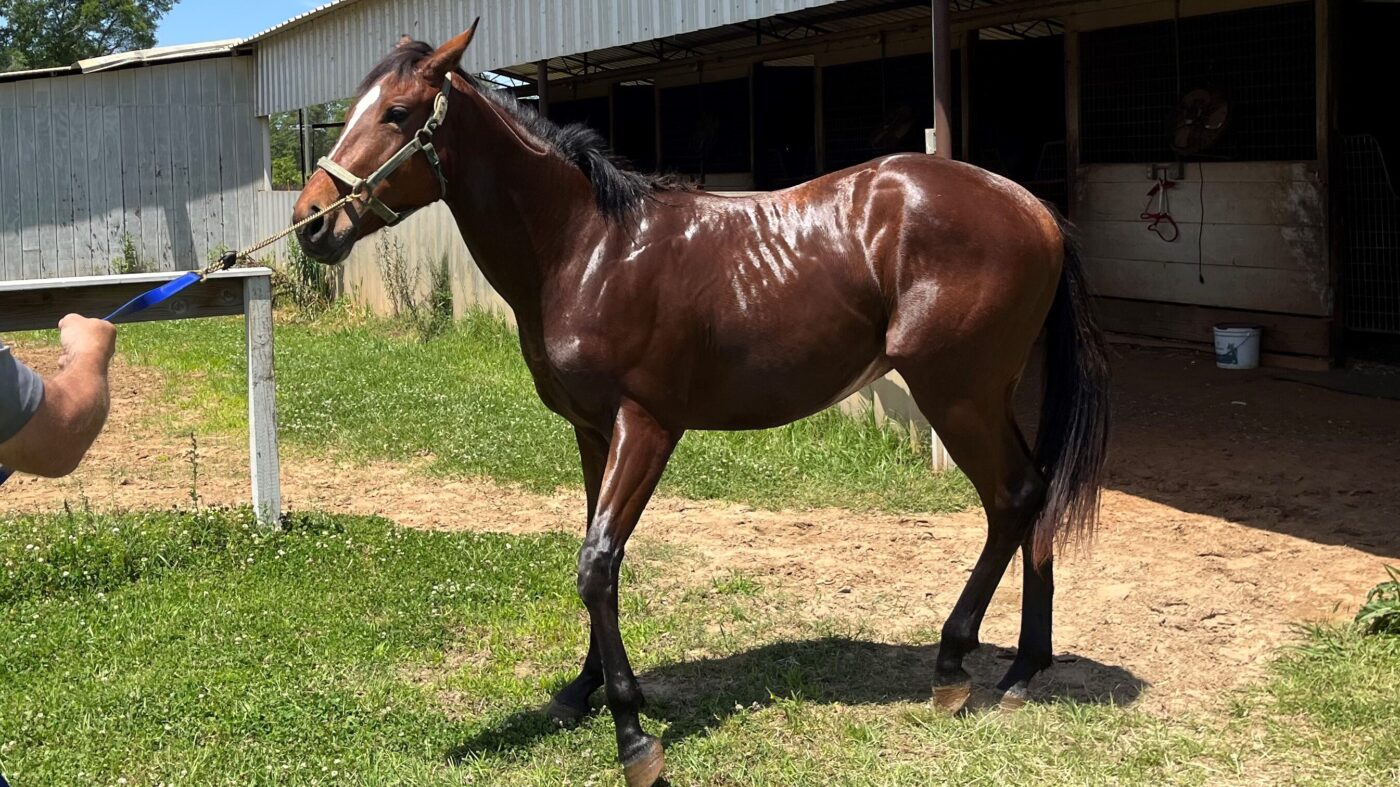
Conclusion: What Does a Horse’s Ears Tell You?
Understanding horse ear movements is more than just a skill – it’s a gateway to deeper communication and connection with these magnificent animals. The subtle flicks, turns, and positions of a horse’s ears offer invaluable insights into their thoughts, emotions, and intentions.
The Journey of Learning
- Continuous Observation: The key to mastering this aspect of equine communication lies in consistent observation and practice. Each horse is unique, and their ear movements can have different nuances.
- Building Bonds: By becoming attuned to these signals, handlers, riders, and enthusiasts can develop stronger, more empathetic relationships with their horses, enhancing safety, training, and overall enjoyment.
Additional Resources:
- Understanding Horse Behavior: Reasons Why Horses Bite – Gain insights into why horses might exhibit biting behavior and how to address it. Read More
- A Language of Their Own: An Interactionist Approach to Human-Horse Communication – Explore the intricate ways in which horses communicate with humans. Read More
- Decoding Horse Sounds: Why Horses Neigh and Other Vocal Communications – Understand the various sounds horses make and what they mean. Read More
- Sensory Abilities of Horses and Their Importance for Equitation Science offers valuable insights. It delves into the sophisticated auditory capabilities of horses, highlighting how these abilities shape their perception and behavior and underscoring the importance of recognizing these cues in equine training and care.

About the Author: Miles Henry
Lifelong Horseman | Racehorse Owner | Published Author
Miles Henry brings over 25 years of hands-on experience training and owning Thoroughbred racehorses. Raised with Quarter Horses and Appaloosas, he’s spent a lifetime learning from horses—on the track, in the barn, and in the field. Today, he runs a small but successful racing stable in Louisiana and shares real-world insights on HorseRacingSense.com, helping horse owners, fans, and bettors navigate the sport with confidence.
📚 Books: View Miles’s books on Amazon »
🎧 Podcast Guest: Animal Tales Ep. 32 |
YouTube Interview
📩 Newsletter: Sign up for racing tips and horse care advice »
🔗 Follow Miles:
Twitter |
Facebook |
YouTube


